By the end
of April, I visited the Lippeaue, Germany, again and met with the workers of
the ABU Soest to have a look at the Taurus cattle herds and discuss. As usual, it
was a very enjoyable and informative trip and I took a lot of photos. Please don't use them without permission.
For my first trip in 2013, go here. For my second trip in 2015 go here.
What has
changed since 2015
The two
years since I visited the herds the last time in fall 2015 saw some deaths of
good individuals unfortunately (Liberta, Lambada) but also a number of calves
turned into interesting animals. As a whole, the herds were quite a bit less
numerous compared to 2015 and 2013 sinc a lot of individuals were sold because
the herds got too big (now there are about 85 individuals in total grazing in
the Lippeaue). Two herds have new breeding bulls: Disselmersch and
Klostermersch-Süd. The former bull at Disselmersch, a son of Laokoon and
Larissa, was slaughtered because of his small Chianina-like horns shortly after
I visited the herd. Londo, the former breeding bull at Klostermersch-Süd, was
slaughtered too last year. He was too dachshund-legged and small overall, and
all of his offspring turned out to be dachshund-legged as well – this an
interesting and actually not all that negative fact. Londo was one of the very
few “true F2” crosses, and even a cross between siblings, so I predicted him to
be to be stable for a number of traits that he possessed – the good ones just
as much as the undesired ones. The fact that all of his offspring shared his
dachshund-leggedness shows that the concept working with “true F” crosses
actually works, it just happened to work on an undesired trait. Having luck
with another true F2 and using it as a breeding bull might stabilize the herd
in a desirable way. The new breeding bull at Klostermersch-Süd will be
introduced in the section “the herds”. We did not have enough time for
Disselmersch this time unfortunately, but I saw a photo of the new bull, and it
looked pretty good.
Breeding-strategies
– why still back-crossing?
In the past
we already discussed why limitations of area size, conservational aspects,
animal welfare as much as practical obstacles make it impossible to shift to a
completely different breeding scheme in the Lippeaue (or all other grazing
projects, by the way), f.e. such as trying a “true F2” scheme as described in
this post. Further problems would be a high degree of inbreeding and a high portion
of animals not suitable for further breeding. However, I suggested that paying
attention on producing single “true F” individuals that look good and using
them as breeding animals might speed up the process without any additional
costs or effort. While that may or may not be true, Margret Bunzel-Drüke told
me that she would be cautious on increasing the degree of inbreeding that much
in a cattle herd, because of the danger of fixating deleterious alleles. Cattle
are not laboratory mice, after all. Nevertheless, “true Fs” are still produced
in the Lippeaue, but coincidentally; f.e. the breeding bull “Laokoon’s brother”
is placed among two cows of the same breed combination as he is.
Another
aspect that we discussed is back-crossing with the founding breeds. The
Lippeaue population actually has almost all possible combinations of the three
main founding breeds already, and also in an advantageous relation: in 2013,
the genealogical contribution to the gene pool was 47% Sayaguesa, 29% Heck, 20%
Chianina and 4% Lidia – an almost ideal relation of breeds. Back-crossing with
the founding breeds and using half-pure individuals as breeding bulls instead
of working only with advanced crosses will always slow down the breeding
process. So why not closing the gene pool and working with the genes that are
present in the population?
I and
Margret talked about this issue and the main reason for continuing the back-crossing
with the founding breeds is to increase genetic volume. In the 1990s, they
started with only very few individuals of Chianina and Sayaguesa (two in the
case of the former and three in the case of the latter), so the genetic basis
for the whole herd, which has produced hundreds of individuals since then, was
comparably narrow. So they continue to back-cross them with good animals of
those two breeds in order to increase the genetic diversity of the herd, which
is vital, especially when considering that the Lippeaue is the main source for
Taurus breeding individuals in Germany and therefore has a big influence on the
Taurus and Heck cattle gene pool as a whole. And they do have really good pure
Sayaguesa, such as the red cow Julia or the one at Klostermersch-Süd, and also the
Chianina cow Laura is really good and of Rainer Titzentaler’s large-sized
strain. The Wörth Heck cow Nadia’s job is not only back-crossing but also to
increase the horn volume in the herd, and I am really looking forward to see
the results of mixing the Taurus and Wörth lineage.
Of course
traditional breeding and continuing back-crossing slows down the progress a
bit, but I was told that they do not feel the need to hurry up – not to forget,
the Lippeaue is not an aurochs project per se, but conservational management of
a reserve using cattle, and breeding them towards an aurochs-like phenotype is
a side-project, so to say (and this is the case in all grazing projects, by the
way).
Bull sizes
A pretty
interesting question for me has always been the size of Taurus cattle. In 2015,
we managed to measure two cows (Bionade and Liberta, somewhere between 153 and
155 cm at the withers). More interesting is the size of the bulls, of course.
Lucio, a pretty early cross bull, was measured somewhere between 160 and 165 cm
at the withers, and it was the only bull for which height data was known so
far. Because it was such a large individual, we assumed most of the other bulls
would be smaller. Then there was the notion that Olaf Nowacki’s Taurus bulls
(both born in the Lippeaue) would have reached 170 cm at the shoulders – I was
sceptical at first, because they would have surpassed Lucio, a bull that
already was seemingly an exceptionally large bull.
However, I
once again took my yardstick with me. When we took at the look at the Kleiberg
herd, Matthias Scharf managed to measure the breeding bull Linnet. The result
was somewhere between 155 and 160 cm. However, Linnet is known not to be the
tallest due to his shorter legs compared to other bulls. So when we moved on to
Hellinghauser Mersch, where 42 623 (“Laokoon’s brother”) is the breeding bull,
we measured the height of the arresting gear’s top bars, for which 42 623 was
large enough to scratch is shoulders when he was in it last time for routine
examination. It turned out that it was 170-175 cm high, so 42 623 must be 170
cm tall at the withers at least! This
is a good size for an aurochs bull. These data, from Linnet and 42 623, sets
whole new standards for the size of Taurus bulls. It means that 170 cm for both
of Nowacki’s bulls is absolutely plausible and that Lamarck, which is taller
than Linnet, is probably about 160-165 cm tall. It also means that Taurus bulls
are, with the exception of the few pure Chianina and large Holsteins that might
be here, the largest cattle in Central Europe.
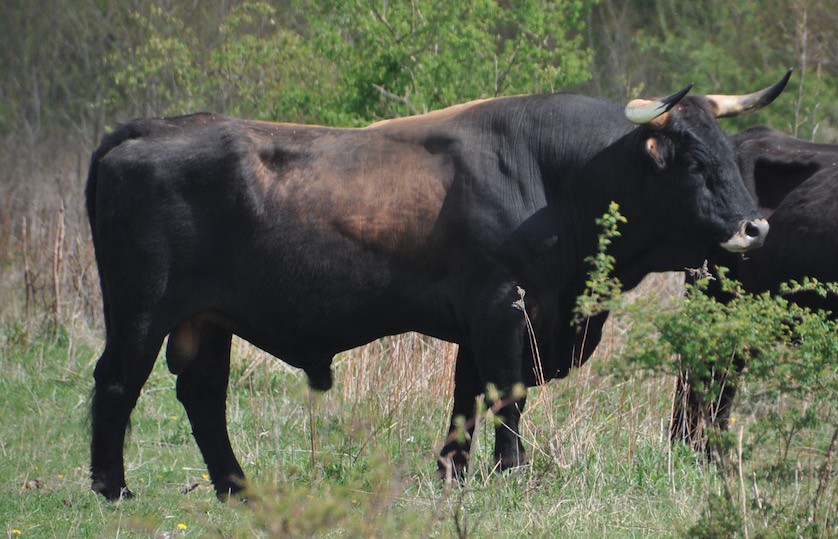 |
| Confirmed: 42 623 is a giant |
On the
small end of the spectrum, there was Londo. In the field we took a look at its
decaying skull, and I measured the distance between his horn tips and it was
exactly 70 cm long. Then at home I used the photo of Londo in profile looking
exactly towards the camera and tried to calculate his withers height. The
result was 148cm – the size of a very large Heck bull, and considering that he
is about the same height as many of the Taurus cows on the photos, it might be
an accurate approximation. So Margret and I concluded that the size of Taurus
bulls usually varies between 150 and 170 cm. For the cows, two individuals
might be too few to give such a broad statement – I am pretty sure the upper
size limit of Taurus cows is 160cm at the withers (Larissa is bigger than
Liberta or Bionade), and I do not know the lower size limit.
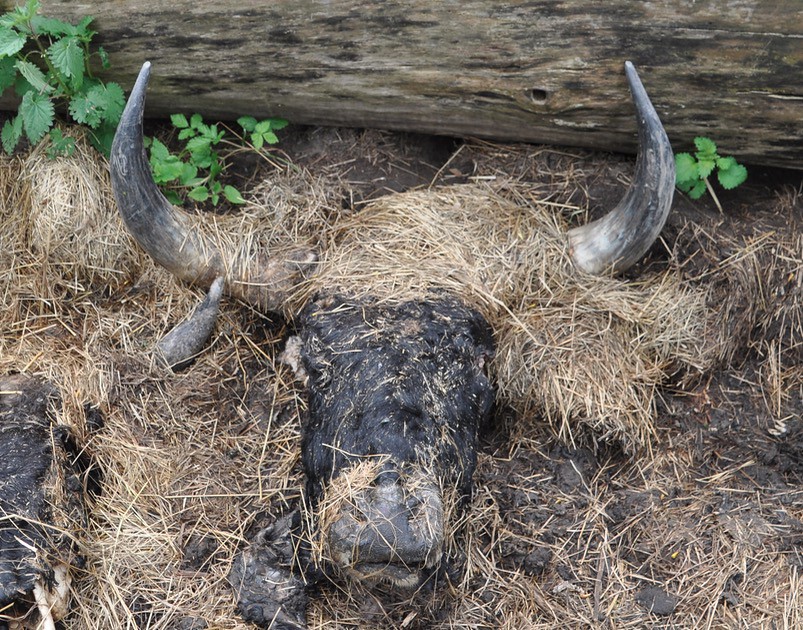 |
| Londo's decaying head. Horn span 70 cm |
The herds
-
Kleiberg
Bionade is
a grown cow now and produced interesting offspring, such as the daughter 01 861
together with Linnet. In such an advanced cross like this, it is unnecessary to
calculate the exact genealogical breed combination because it will not match
the actual genotype, let’s just say she is more than the half Sayaguesa plus a
bit of Heck and Chianina and she absolutely looks like it. She might be the
best-looking cow in the Kleiberg herd, despite her horns facing not inwards. 55 400, a daughter of 42 623, although
quite good regarding body and horn shape, is another one of those with the
mysterious creamish colour variant with diluted nasal mucosa. We do not know which
breed is responsible for this variant, perhaps more than one, and it might also
be coupled with some abnormities in keratin development because their coat and
horns are rather brittle. The oldest cow is Ludovica, 17 years, the only
remaining first-generation cross from the 90s and Heck x Chianina. The young
cows look promising. The young bull (I do not know its mother) looks quite good
so far, maybe it will grow into a good possible breeding bull. Linnet himself
has comparably short legs, as typical of all the offspring of the Sayaguesa
bull Churro, which happened to have short legs as well. But nevertheless,
Linnet is a valuable bull. Not only for his muscular build, but especially for
his thick, inwards-curving horns. Truly inwards-curving horns are comparably
rare even in primitive bulls (exception: Maronesa f.e.), and Linnet is the
Lippeaue bull with the most inwards-curving horns. In an aurochs, they would
curve even further inwards, comparable to those of this wild yak.
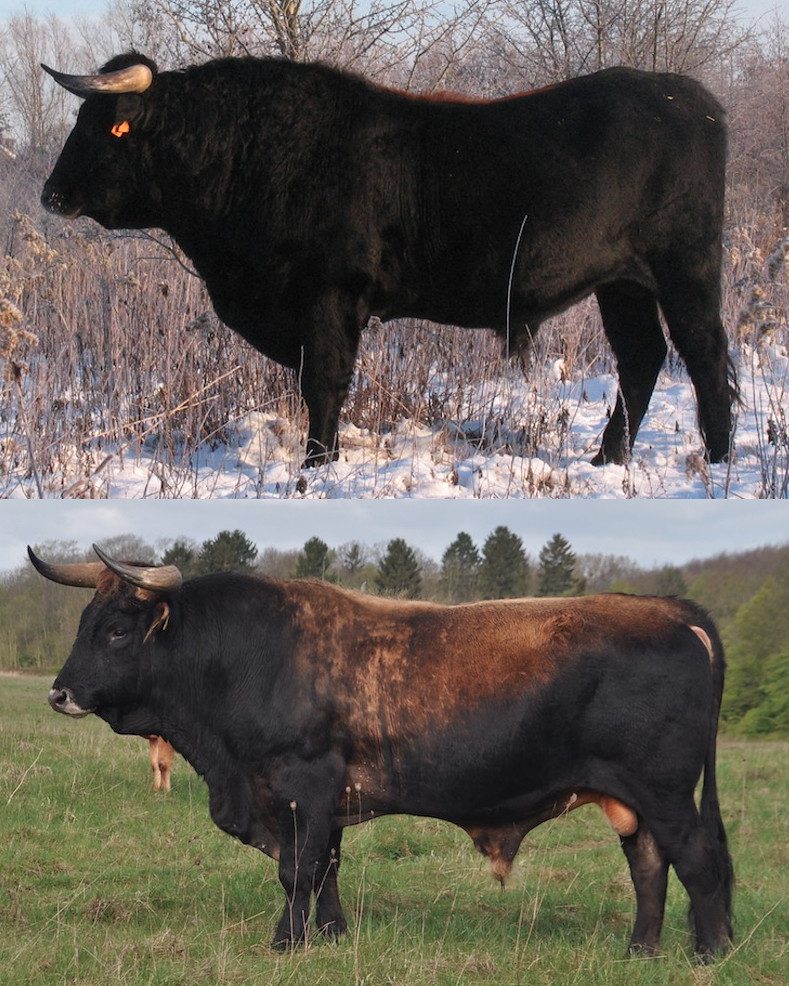 |
| Father and son: Churro and Linnet (photo of Churro: Matthias Scharf) |
 |
| Bionade (Sayaguesa x Chianina) |
 |
| 01 861 |
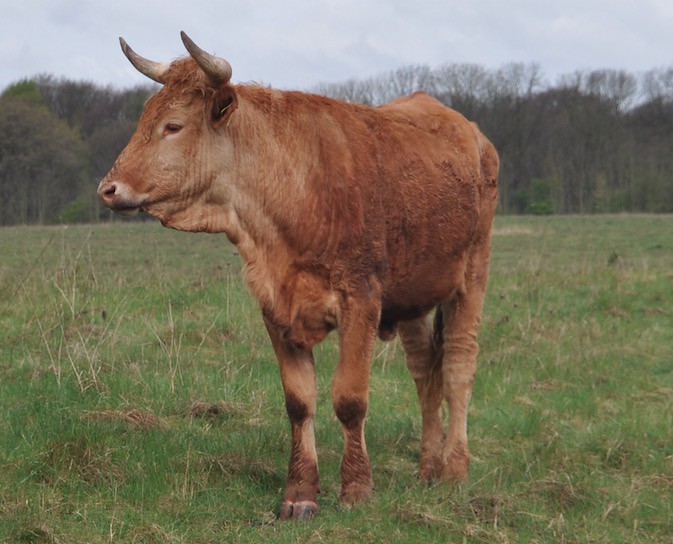 |
| 55 400 |
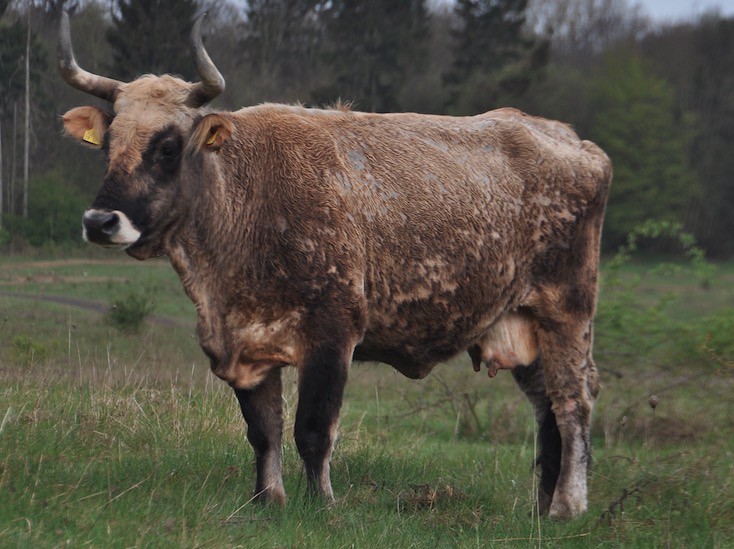 |
| Old lady: Ludovica |
-
Hellinghauser Mersch
Hellinghauser
Mersch is usually the largest of the herds. Dona-Urraca, the oldest of the cows
(21 years) is grazing there. She is rather skinny now and probably will not
calf anymore, but she produced many good individuals in the past. Her horns are
remarkable for the inwards-curve that she passed on to a lot of her offspring. Another
very good-horned cow is 79 813. She is a daughter of Lamarck and Lepisma, and
therefore quarter Lidia. She is one of the more cautious individuals, but not
nervous or aggressive. Lepisma herself clearly shows her half-Lidia descent in
looks, but is comparably gentle. Two other rather good cows in the herds are
Laola and 42 028 (now nicknamed “Dunja”). Both are 50% Sayaguesa 50% Heck x
Chianina and therefore produce “true F2” individuals with the breeding bull 42
623 (“Laokoon’s brother”, still has no proper own name). About half of the
young bulls in the herds are rather light in colour, they either have a saddle
or are almost cow-coloured in one case; I suggested selecting them out, because
the father 42 623 already has a saddle himself and continuing to use such a
lightly coloured offspring might bear the danger of perpetuating this trait.
Nevertheless, looking at 42 623 himself, I really like this giant. Not only for
his size, but also for his muscular body with the well-developed hump. The
horns are ok as well, the body a bit heavy on the other side. Apart from
Dona-Urraca, there are three more Sayaguesa cows in the herd: Julia, a red one
that looks rather aurochs-like, Baba, another brownish one (her male offspring,
unfortunately, often had short faces and a heavy belly as far as I can tell),
and Augustina. One of my favourite Taurus cows, 42 604, is having an injured
foot since about half a year or so, and it is not clear if she is going to make
it. That’s a bit depressing since she is a real beauty in my opinion, but she
seems not to be that tall. There is one young son of her in the herd, a black
one, perhaps he is going to develop well. Another young bull, a son of 72 813, has
a surprisingly diluted colour – keeping in mind that both its parents are 12,5%
and 25% Chianina, however, it might not surprise that much anymore.
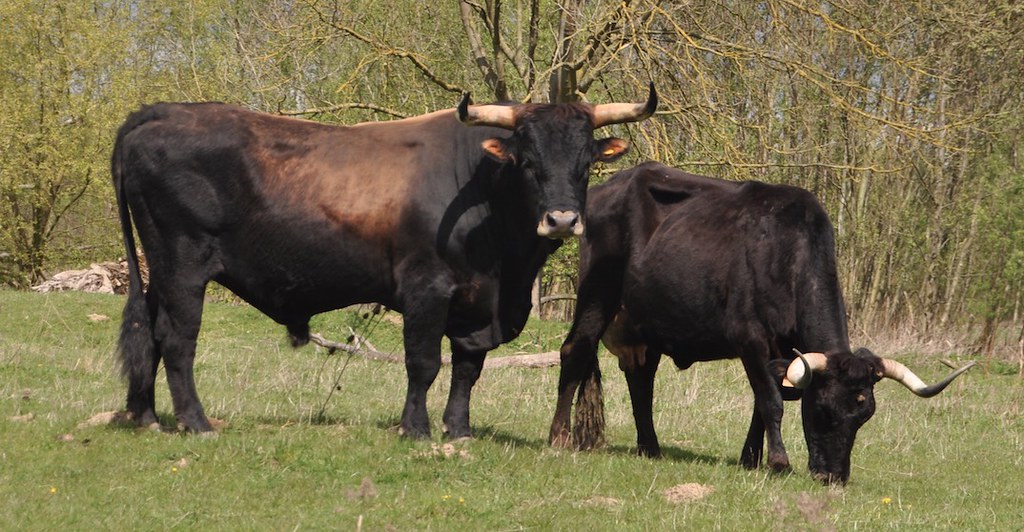 |
| 42 623 and the Sayaguesa Augustina |
 |
| Lirgit (mostly Heck, a bit of Chianina and less Sayaguesa) |
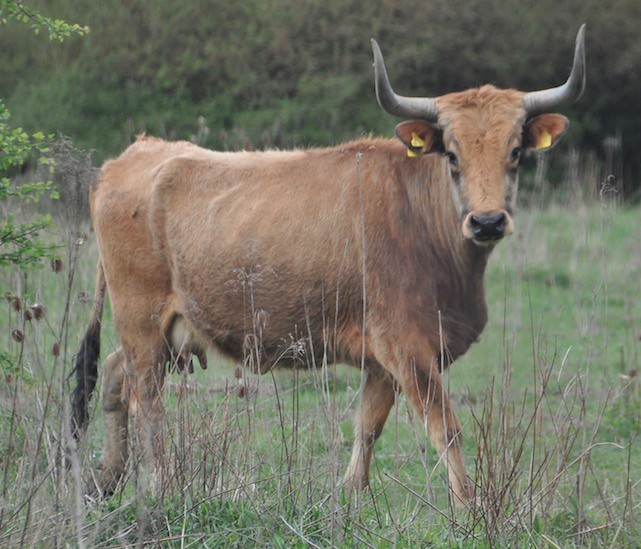 |
| Lepisma: half Lidia, half Heck x Chianina |
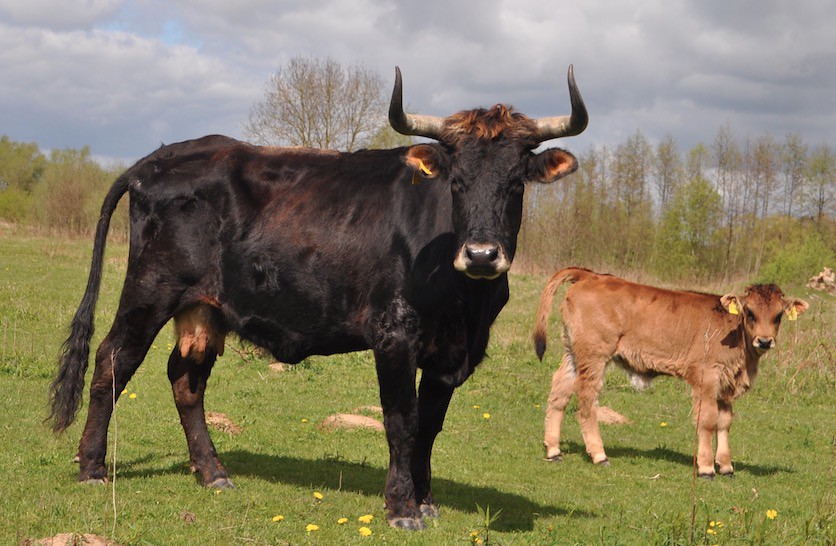 |
| 42 028 |
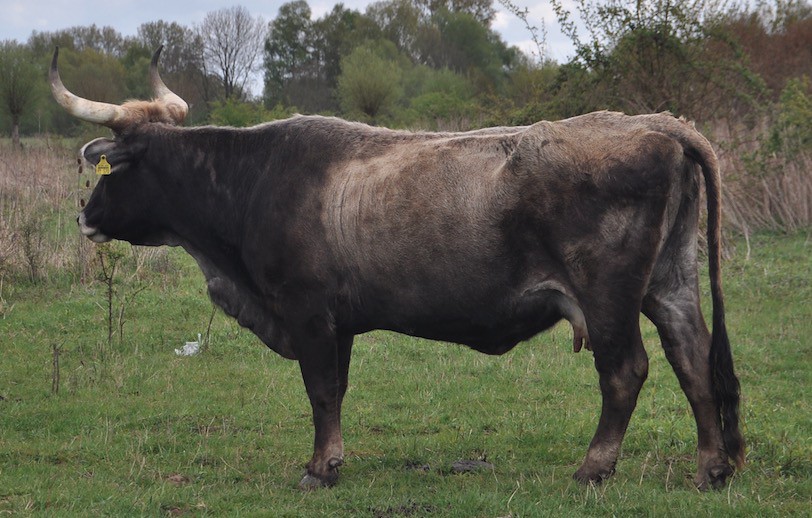 |
| Lirgit again |
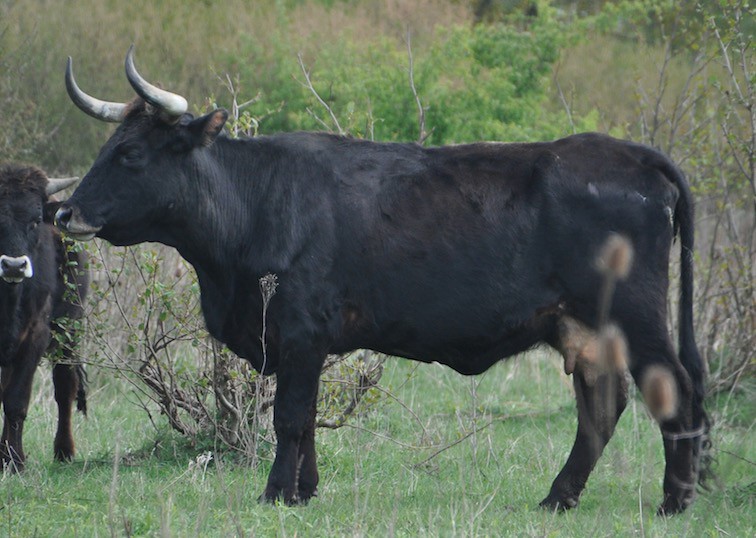 |
| 42 028 again |
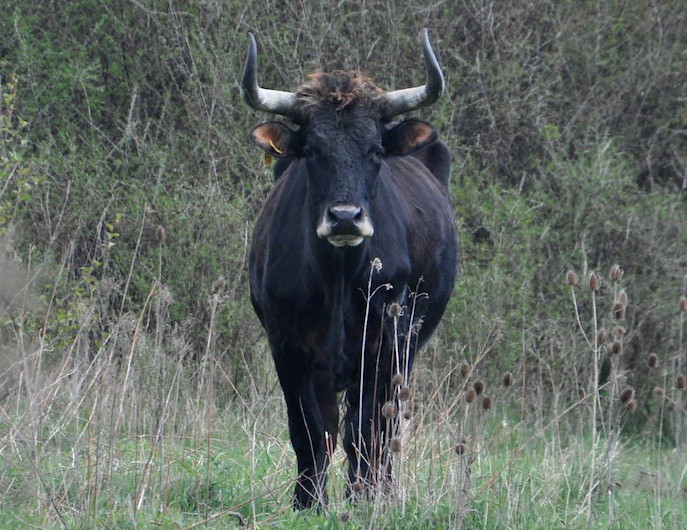 |
| ...and again |
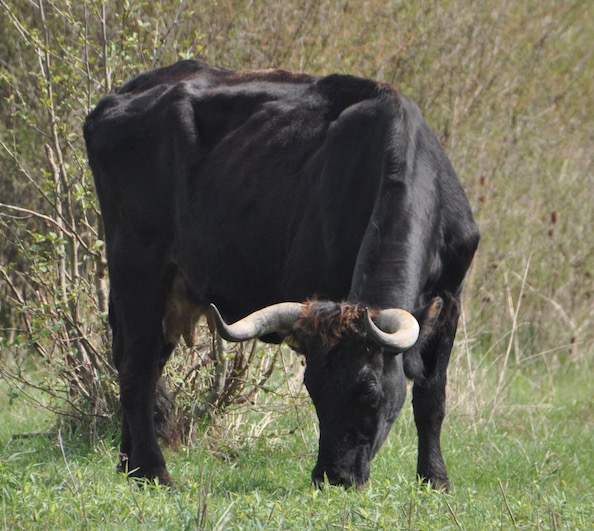 |
| ...and again |
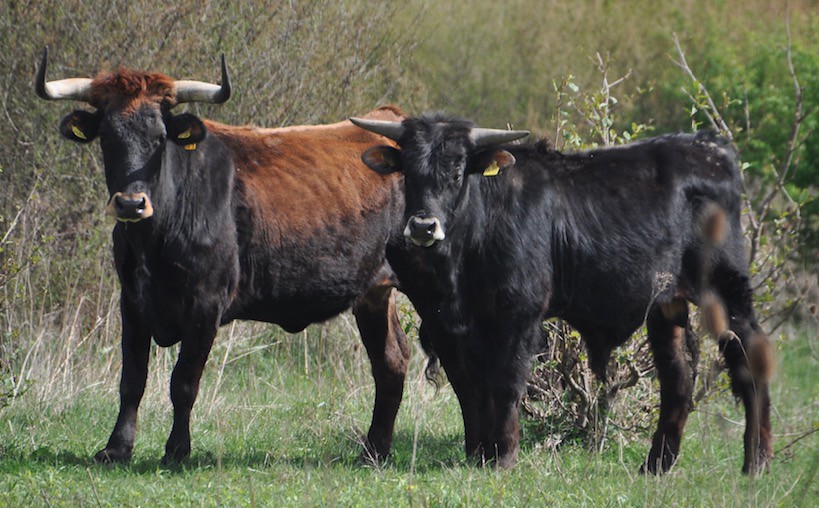 |
| 42 604 and her son |
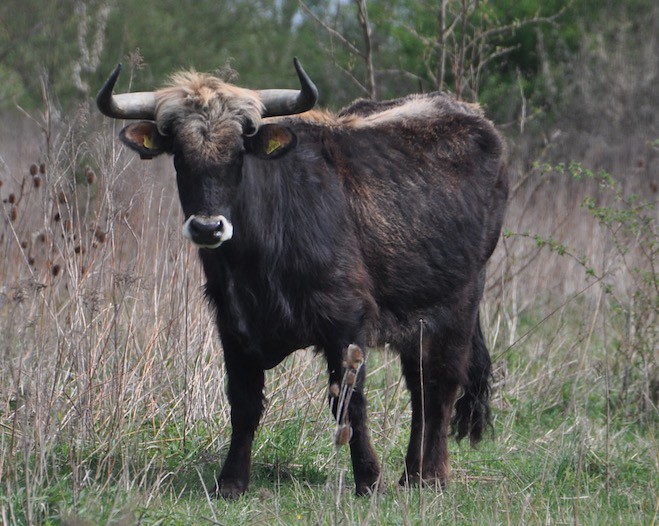 |
| 79 813 |
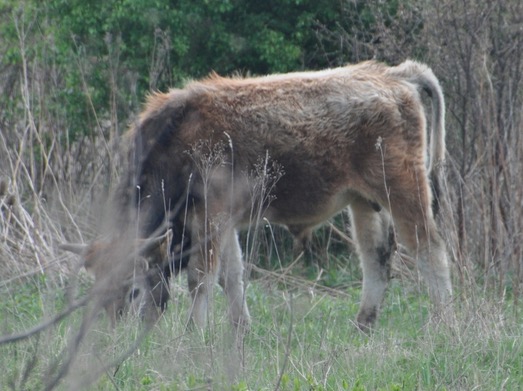 |
| ...and her son |
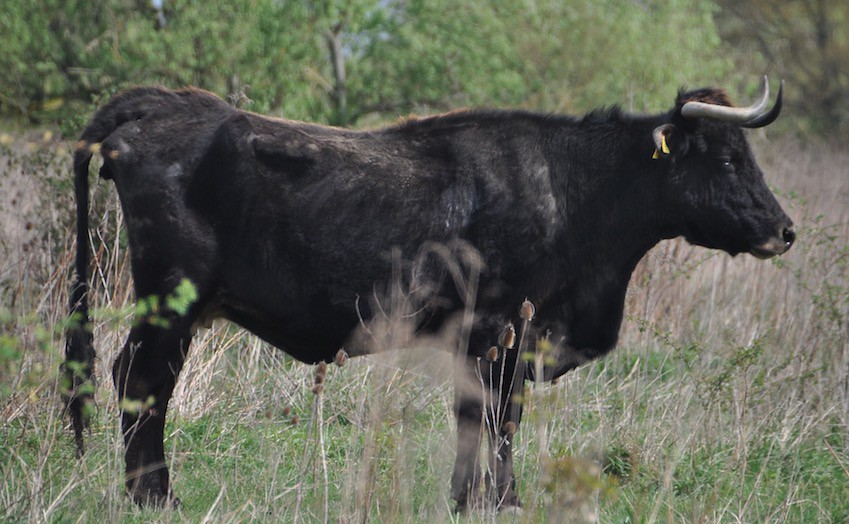 |
| Dona-Urraca |
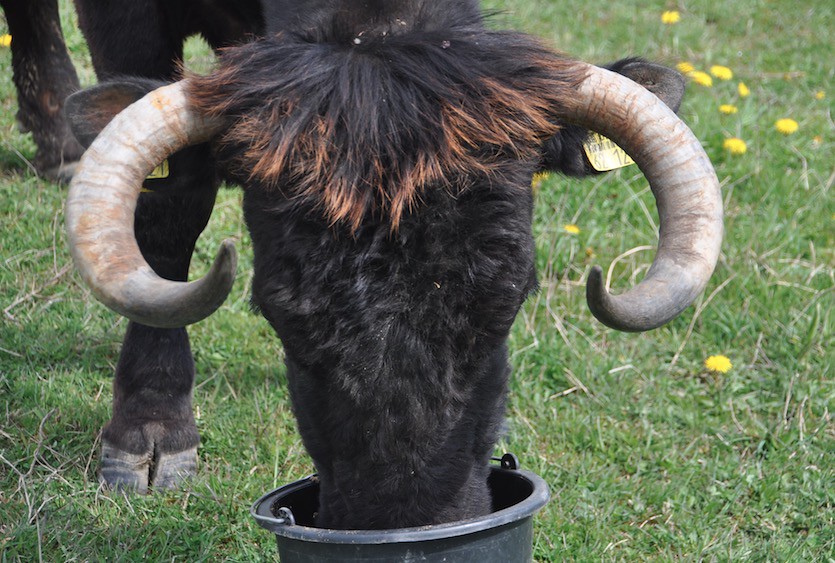 |
| ...having horns shaped like the breeding goal |
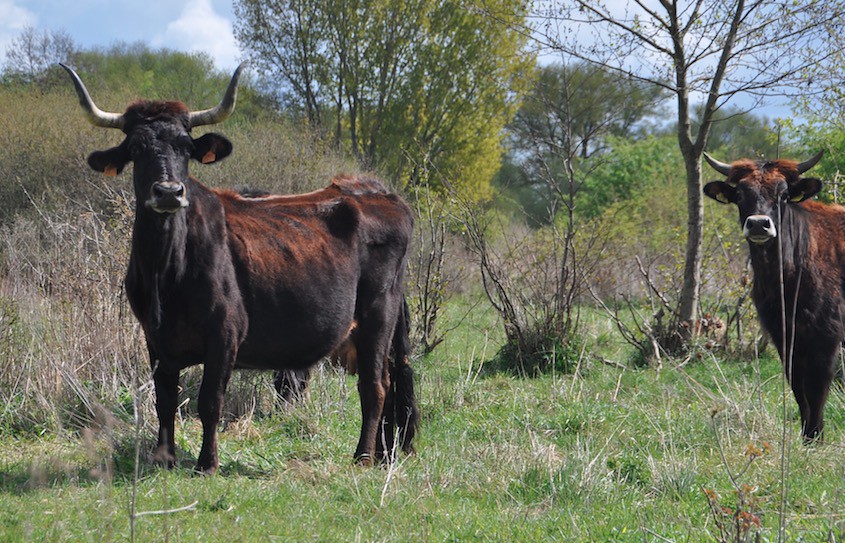 |
| Sayaguesa cow Baba |
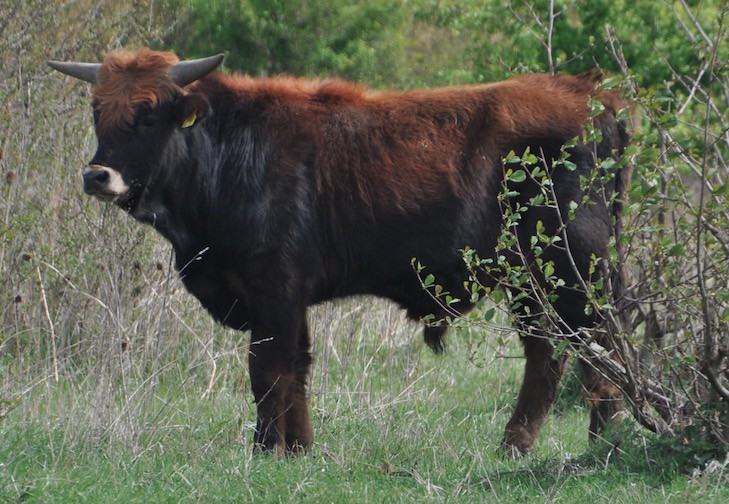 |
| One of 42 623's sons: too much red colour areas for its age |
- Klostermersch-Nord
Klostermersch-Nord
is the herd of my favourite Taurus bull, Lamarck. With the age of 10 years, he
is one of the oldest bulls now, but still well in shape. Give him more
inwards-curving horns, a slightly longer snout and a slightly more athletic
body and he would match my conception of an aurochs bull very well. Linea is of
the same combination as Larissa – half Chianina, half Lombritz (50% S., 25% H.
& C.). 79 845 is a daughter of Linea and Churro, so mostly Sayaguesa and
Chianina, yet her horns are quite Heck cattle-like. 55 386 is cow with good
colour, horns and acceptable body shape. She is a daughter of Lamarck and 1/8
Lidia.
Klostermersch-Nord
is also where Nadia, the pure Heck cow from the Wörth herd, grazes. She was
pregnant when she arrived, and gave birth to a bull calf. They did not keep it,
as a pure Heck bull would deplete the success that has been achieved regarding
size, proportions and body shape. However, this year, she calved again and gave
birth to a daughter of Lamarck. Therefore it is about 62,5% Heck, 25% Sayaguesa
and 12,5% Chianina. I am looking forward to see this cow grow and see what a
mix between the best Taurus bull and best-horned Heck cattle lineage is going
to look like. If she is good enough to be kept, she could produce a good future
breeding bull that has an impressive horn volume.
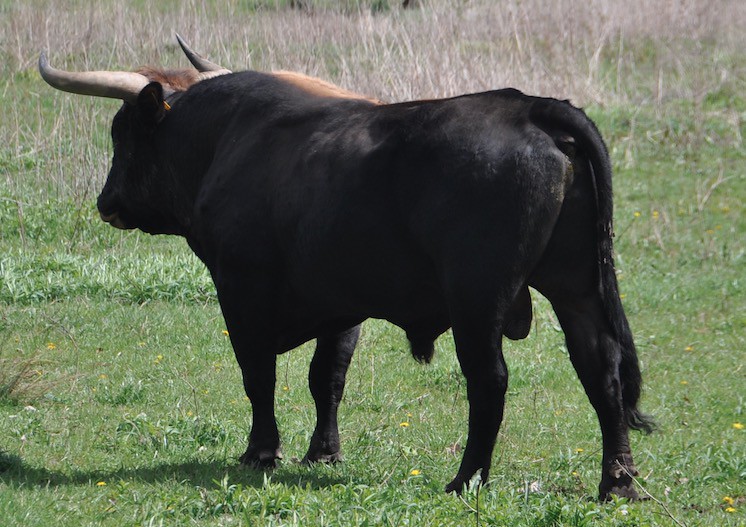 |
| Lamarck: ten years old now and still in shape |
 |
| Linea |
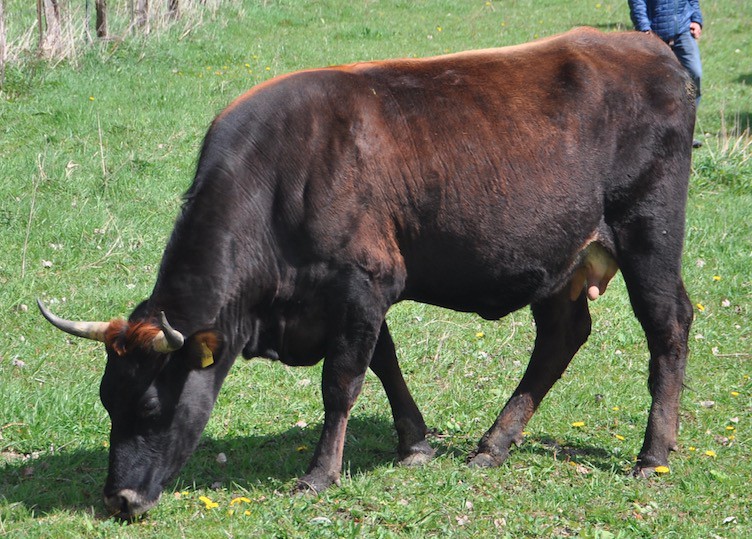 |
| 79 845 |
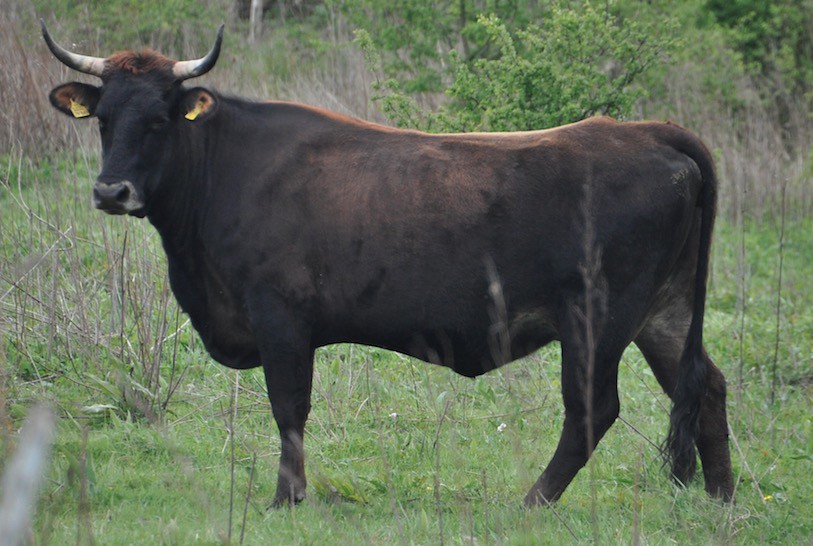 |
| ...again |
 |
| Heck cow Nadia from Insel Wörth |
- Klostermersch-Süd
This herd
contains several good cows – 18-year-old Lerida, one of the very first Heck x
Sayaguesa, Larissa, the largest cow to date, 79 815, a long-faced good-horned
daughter of Laokoon and Liberta, plus Lena II, a well-horned daughter of
Larissa and Churro. There is also a daughter of Laokoon and Laniana (01 870) that is
somehow short-necked but otherwise rather good overall, plus a Sayaguesa cow
with good horns. Londo’s short-legged offspring has been removed, and there are
some grayish half-Chianina in the herd. The preliminary breeding bull of the
herd is quite young yet, and has been nicknamed “Laniel” so far. It is a son of
42 623 and Augustina, therefore 75% Sayaguesa, 12% Heck and 12% Chianina. He
seems to be short-snouted and has the slightly hanging back that many Sayaguesa
have, but he also has the chance to grow big and also has really thick horn
bases, probably inherited from its Heck great-grandfather Lancelot. Together
with Larissa, he might produce some really good individuals: they would consist
mostly of Sayaguesa and Chianina, and have the chance to be large-horned a the
same time. I am looking forward to it. There is also a young Sayaguesa bull in
the herd. As far as I know, they don’t have a plan for him yet.
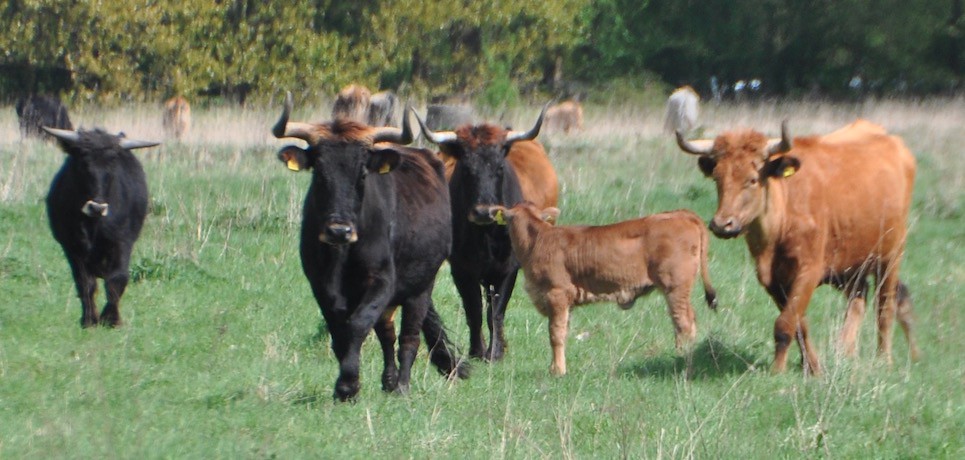
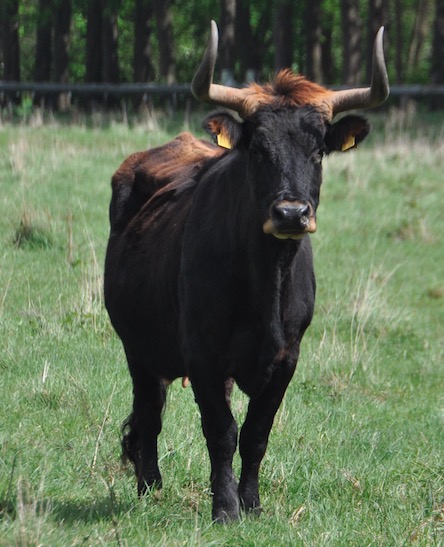 |
| Lerida |
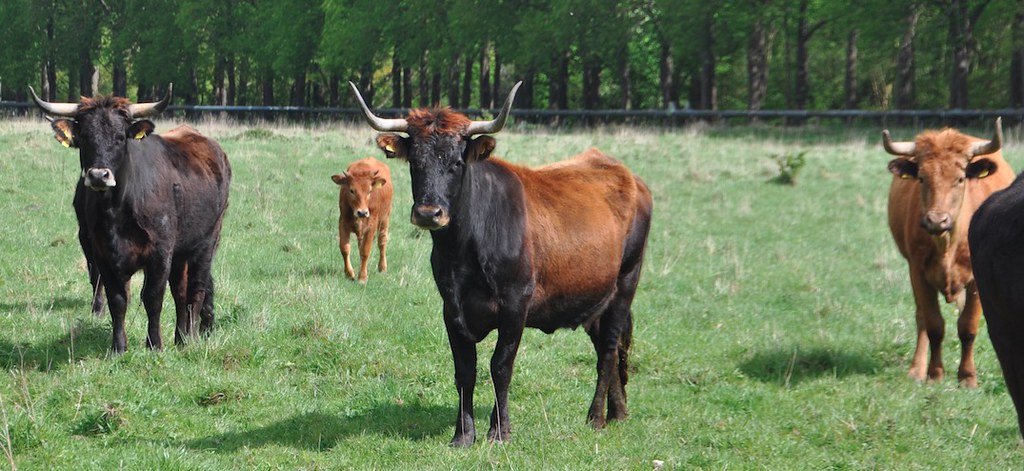 |
| Laniana: 1/8 Lidia |
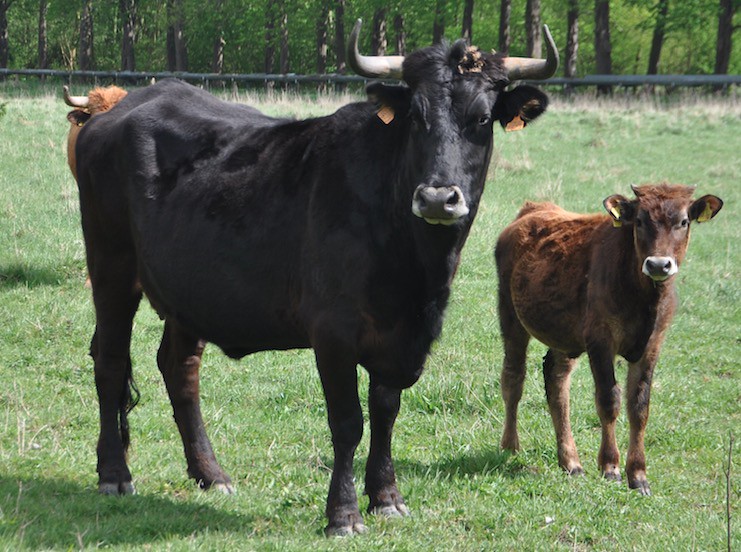 |
| pure Sayaguesa |
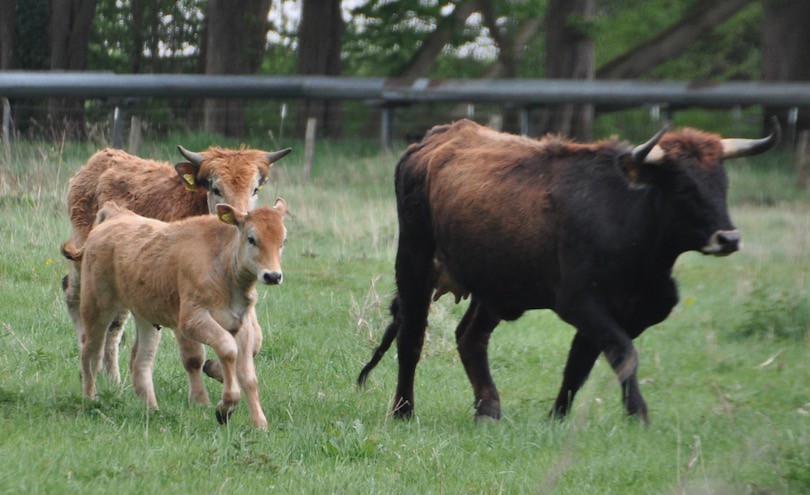 |
| 01 840 |
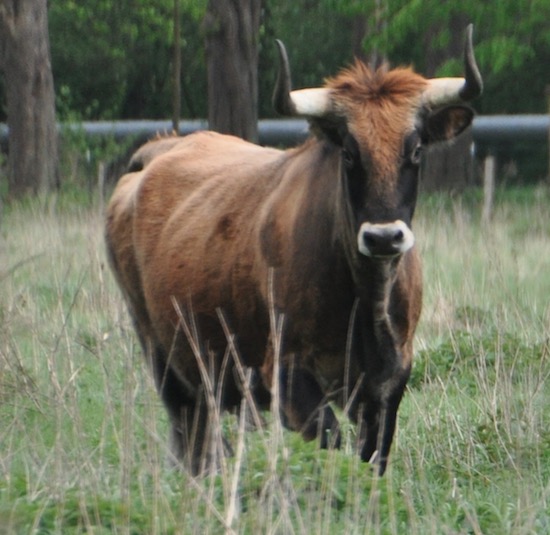 |
| Lena II |
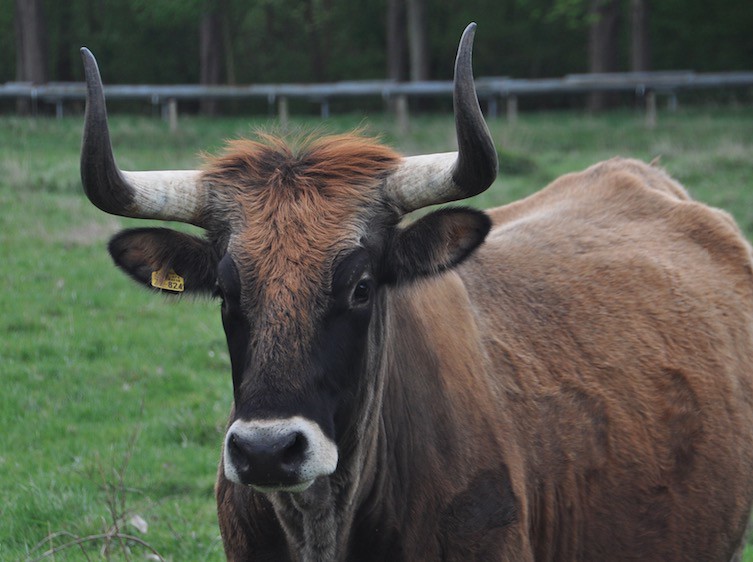 |
| ... and again |
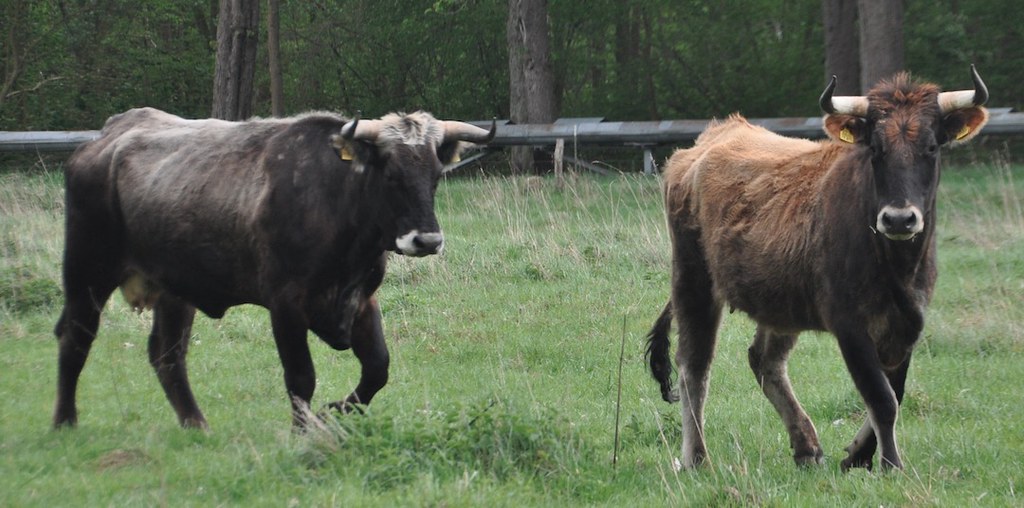 |
| Larissa and 79 815 |
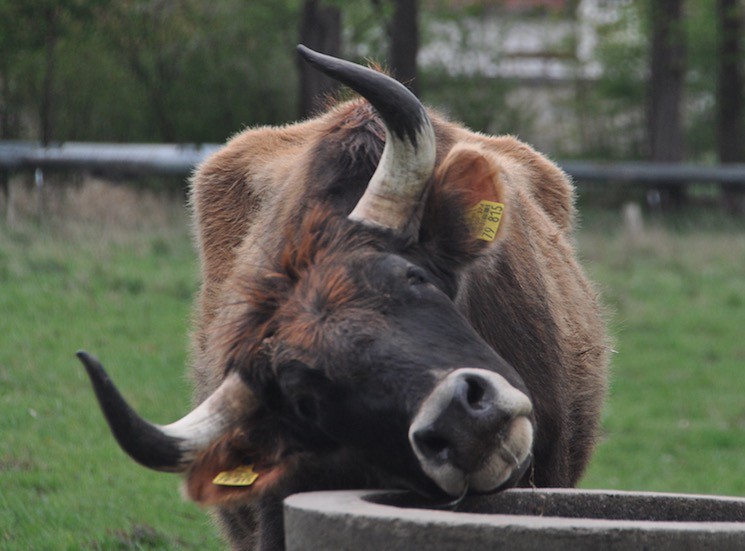 |
| 79 815 again |
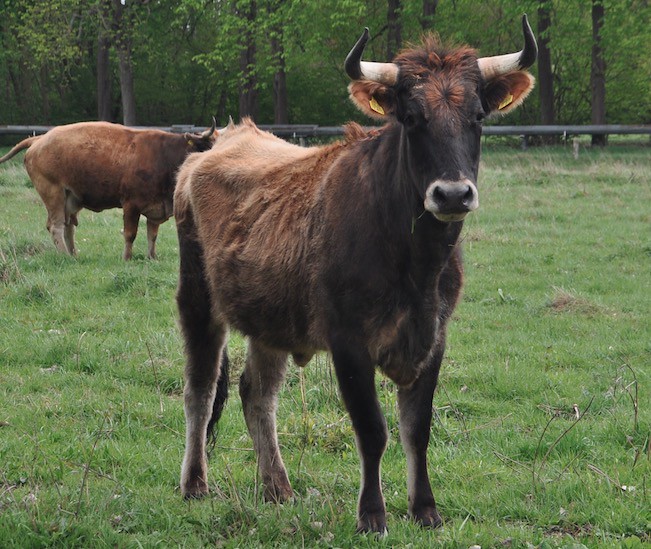 |
| ... and again |
 |
| Chianina cow Laura |
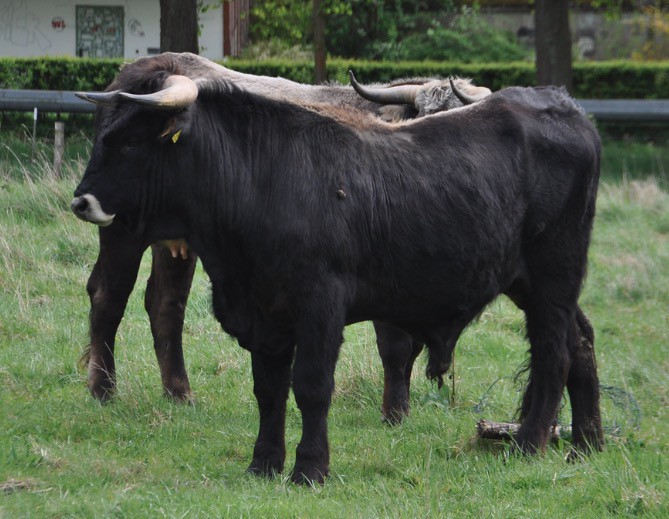 |
| The new breeding bull |
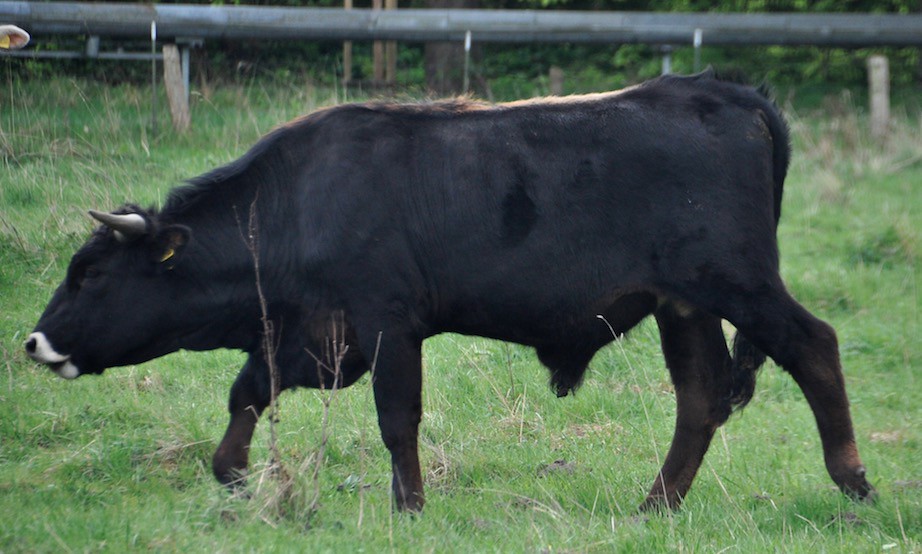 |
| The young pure Sayaguesa bull |







































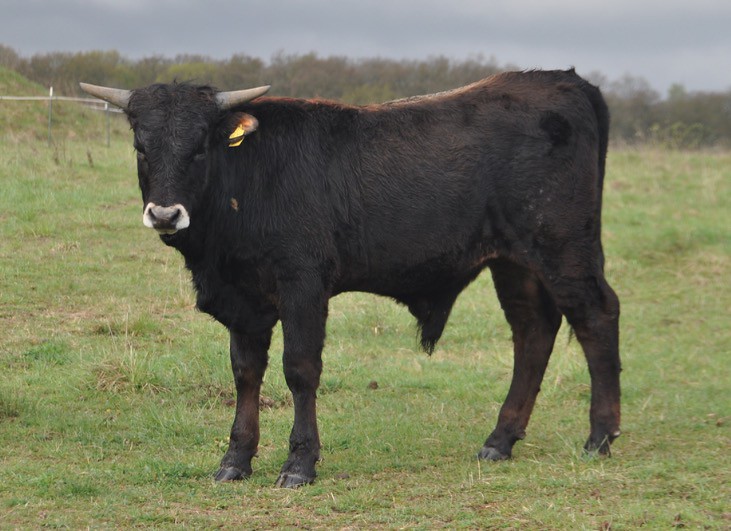
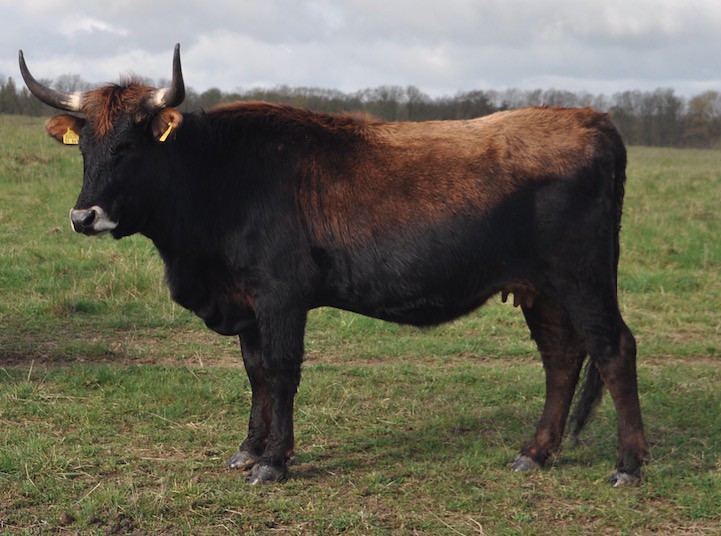
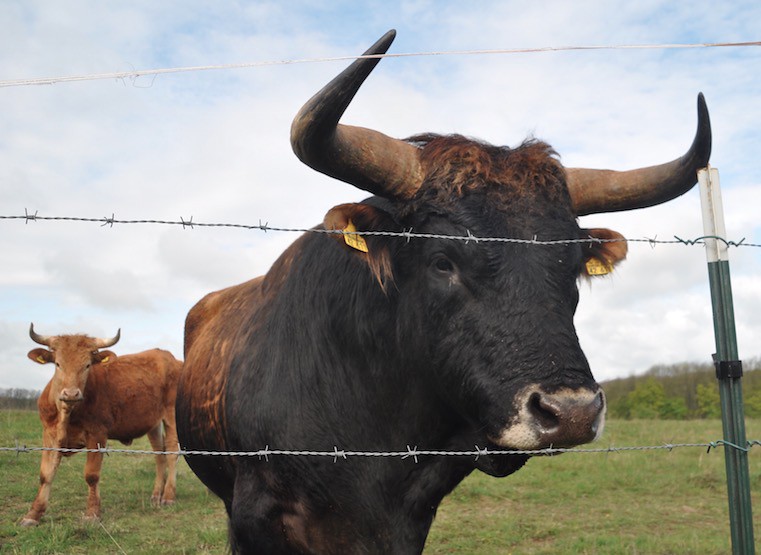



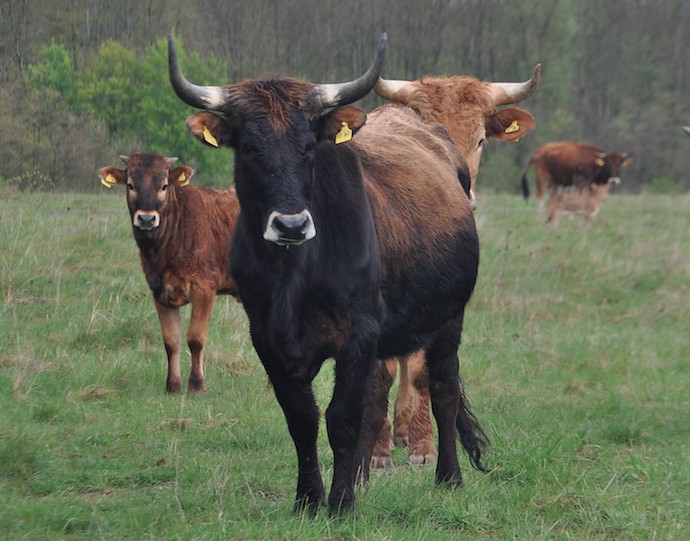
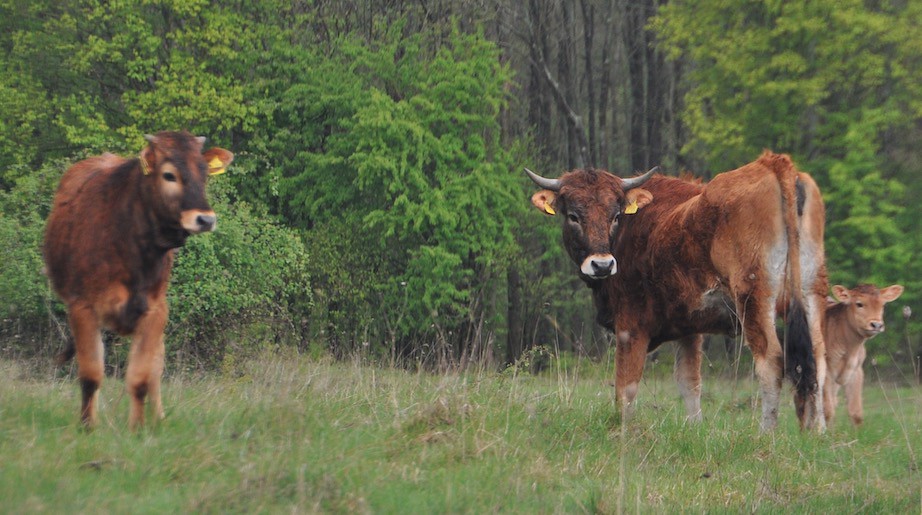

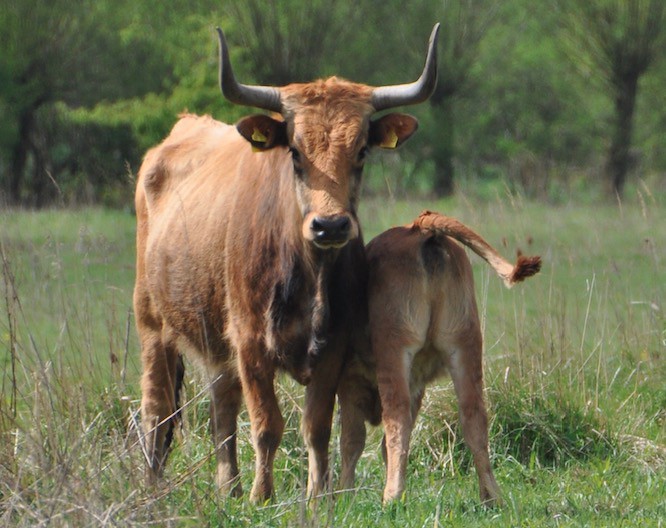


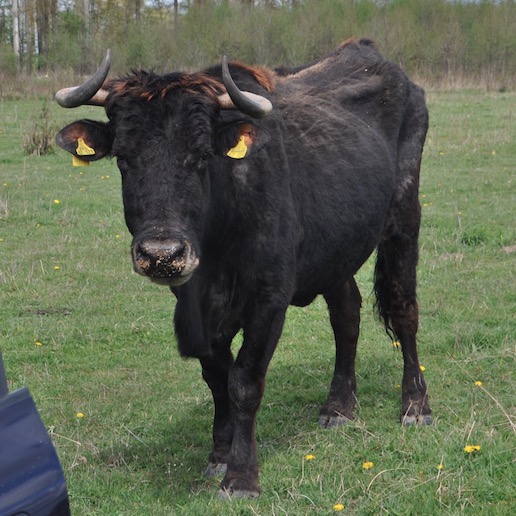

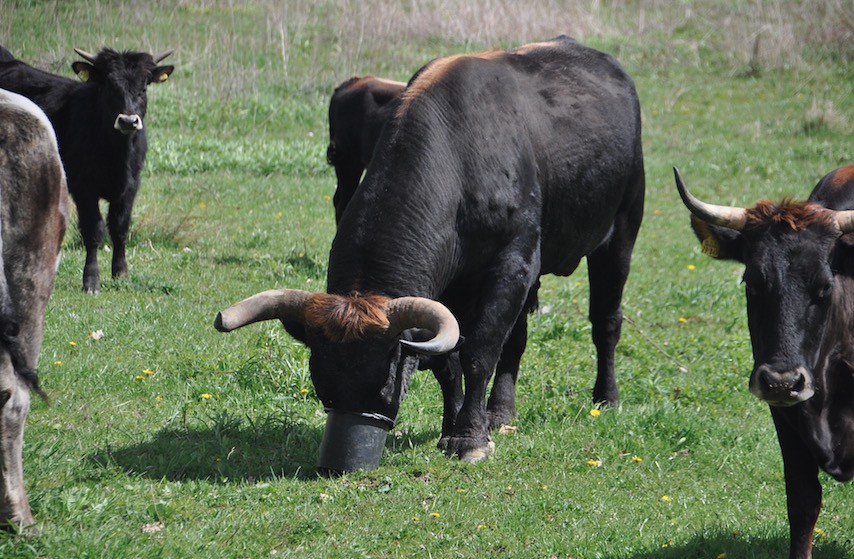
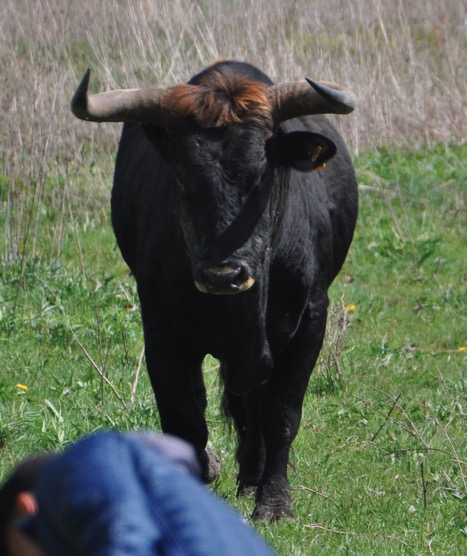


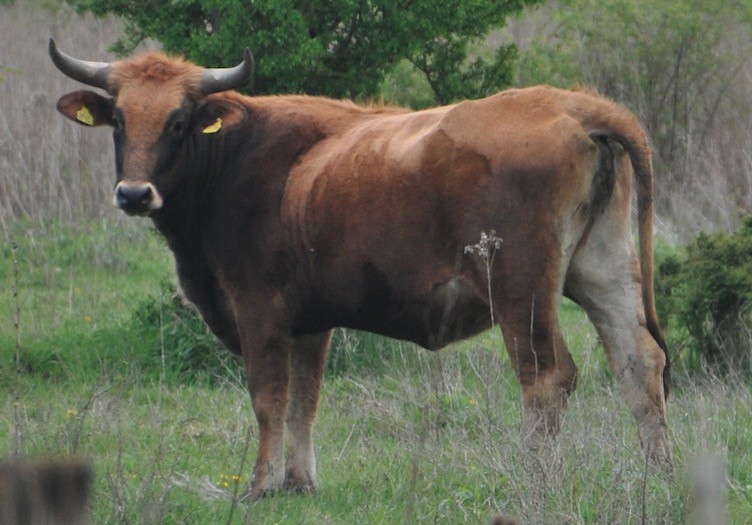

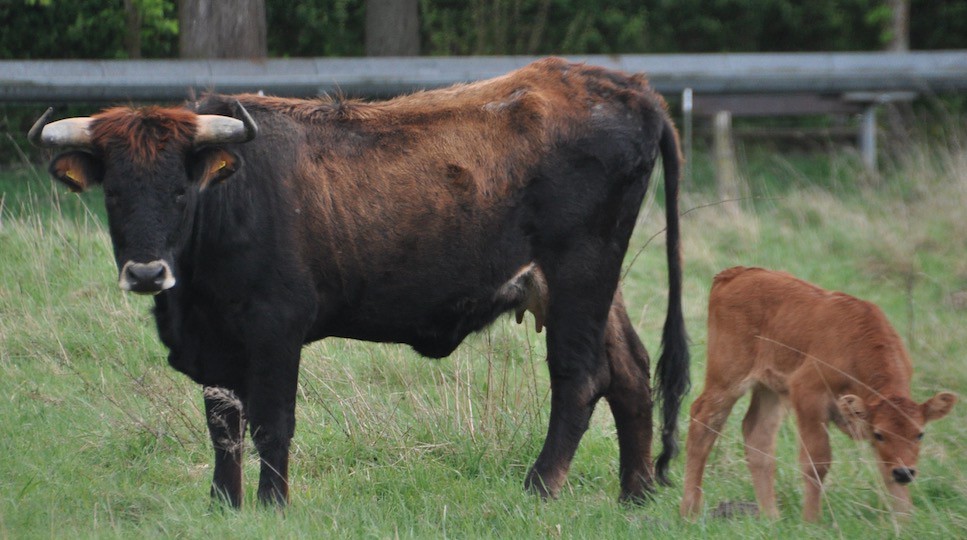
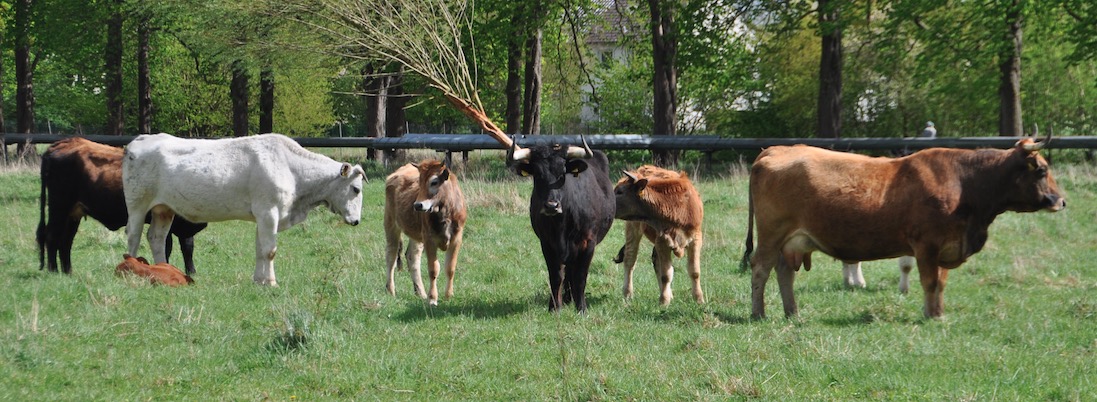

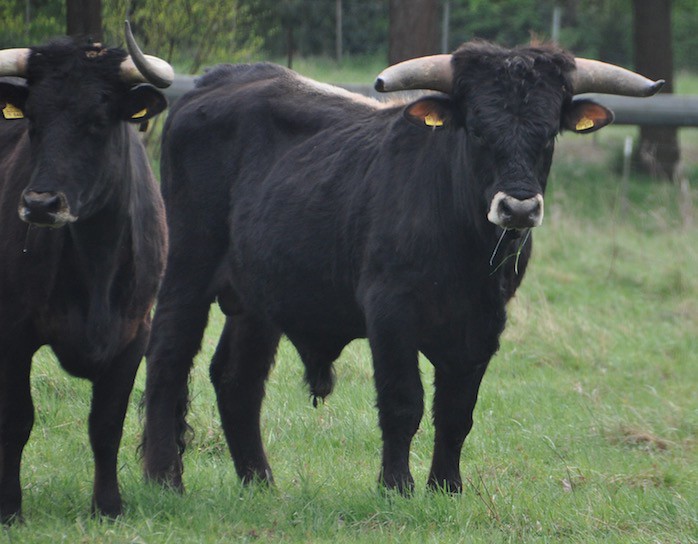
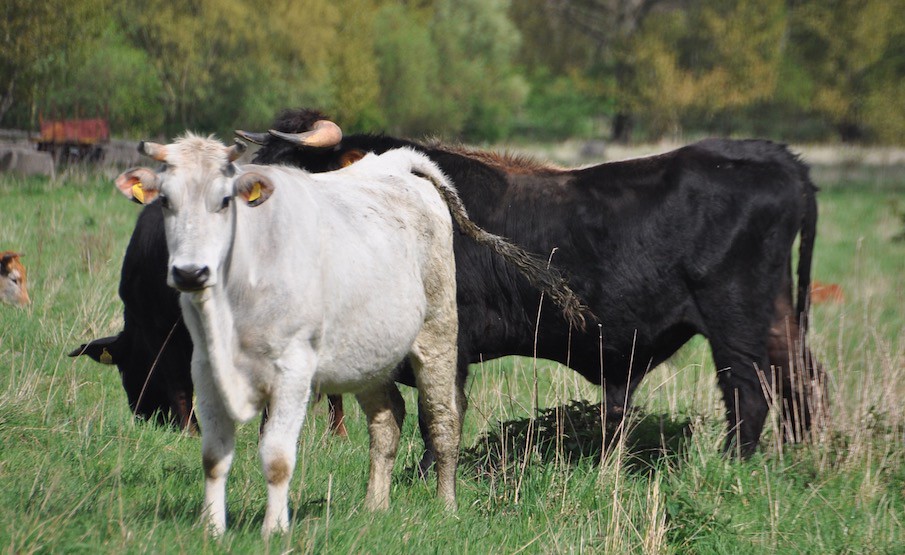
No comments:
Post a Comment